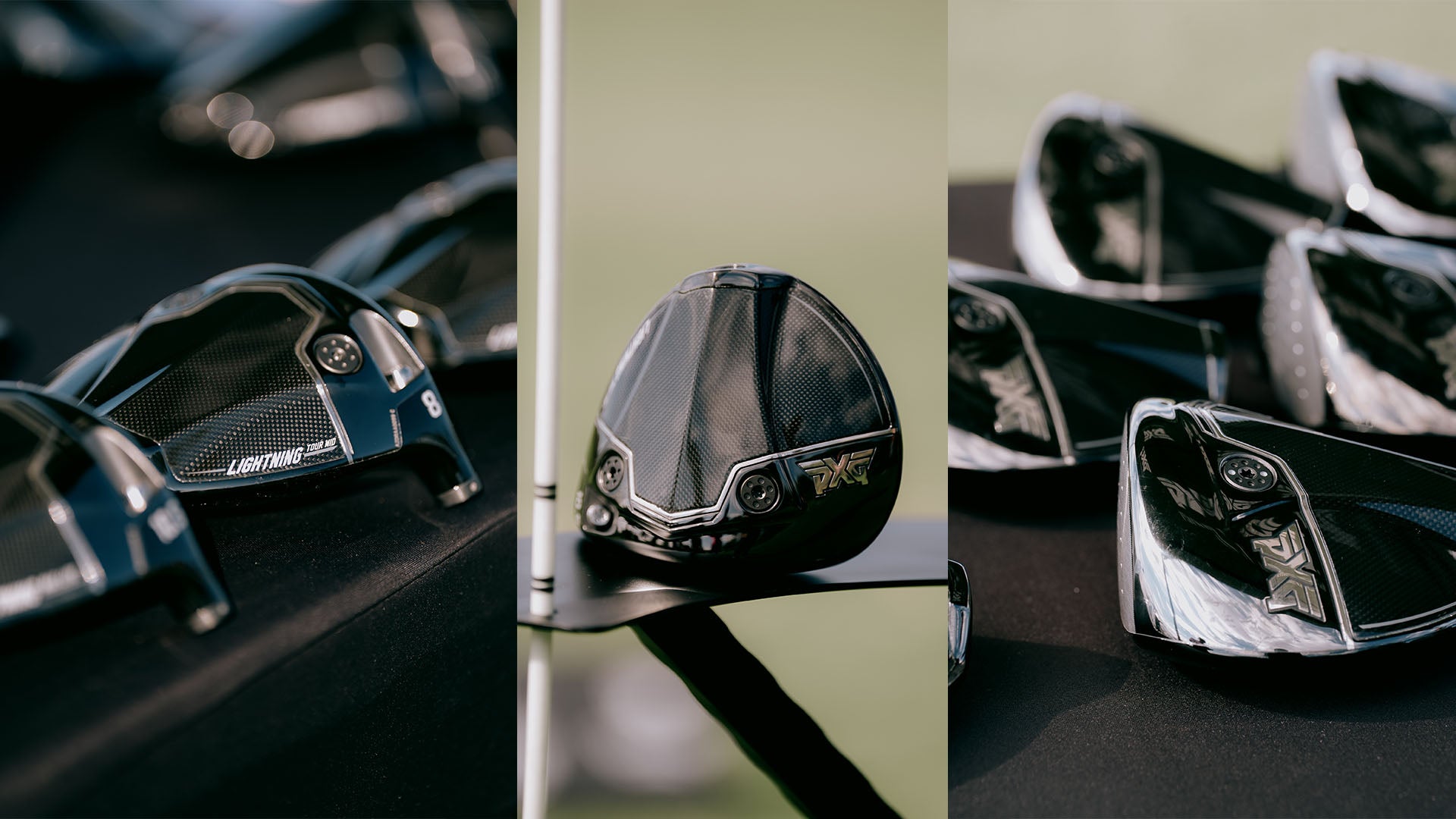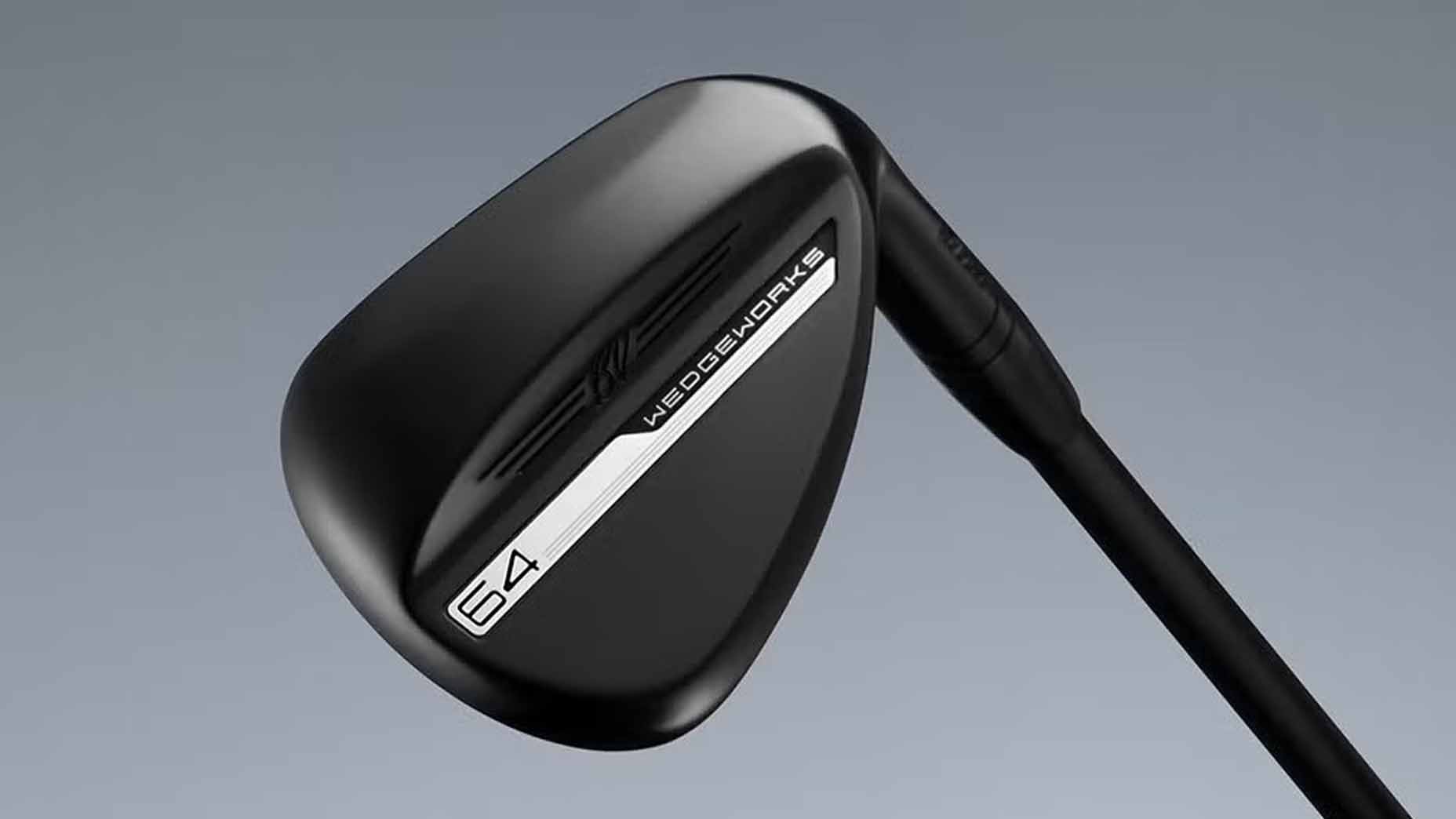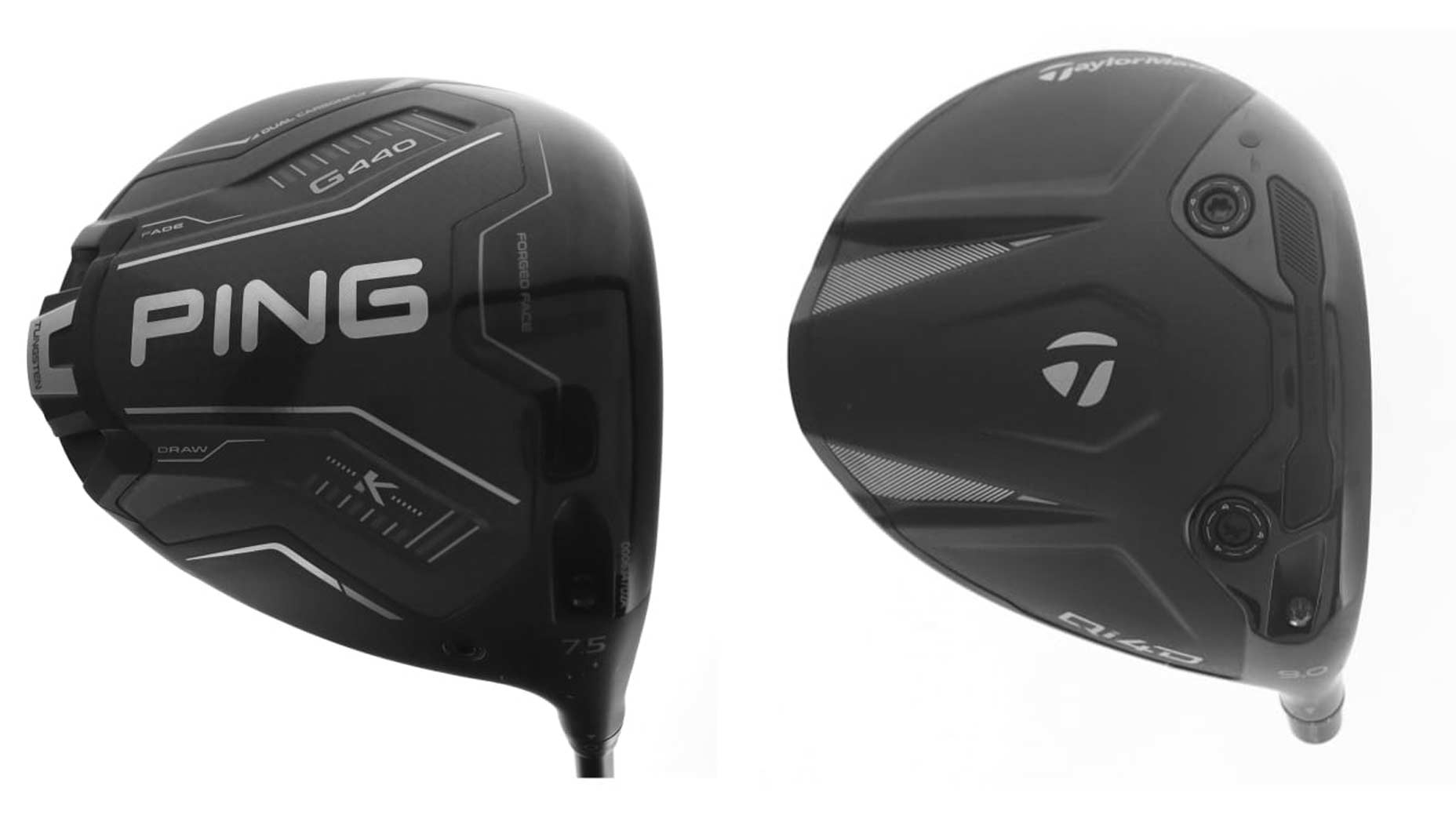Realizing everyone doesn’t have time to consume endless content on club launch day, we’re offering a fresh version of our detailed tech write-up that focuses on the high points. Here’s what you need to know about Titleist’s GT2, GT3 and GT4 ($649 and $849) drivers that will be available through Fairway Jockey beginning 8/23.
Aced with aero
The letters GT stand for “Generational Technology,” which is a bold name to bestow upon a driver. In the ever-changing world of golf club design, manufacturers are consistently pushing the limits of speed and consistency with groundbreaking materials that deliver a performance edge.
Seeking out the “next big thing” hopefully keeps you one step ahead of the pack. Back in 2020, Titleist found another gear when it introduced ATI 425 — an aerospace titanium face material that turned out to be a generation technology for Titleist. With a ductility that was 30 percent higher than standard 6-4 Titanium, it was suddenly possible to maintain durability and bump up ball speed across the entire face structure at the same time. The face material threw down the gauntlet for its competitors.
Titleist has retained ATI 425 and made modifications to the face design since it was introduced, but there’s a limit to the amount of speed you can squeeze out of a face with the USGA and R&A constantly looking over your shoulder. As any good R&D department would do, Titleist began looking around for the next generational bump in speed and immediately turned to aerodynamics.
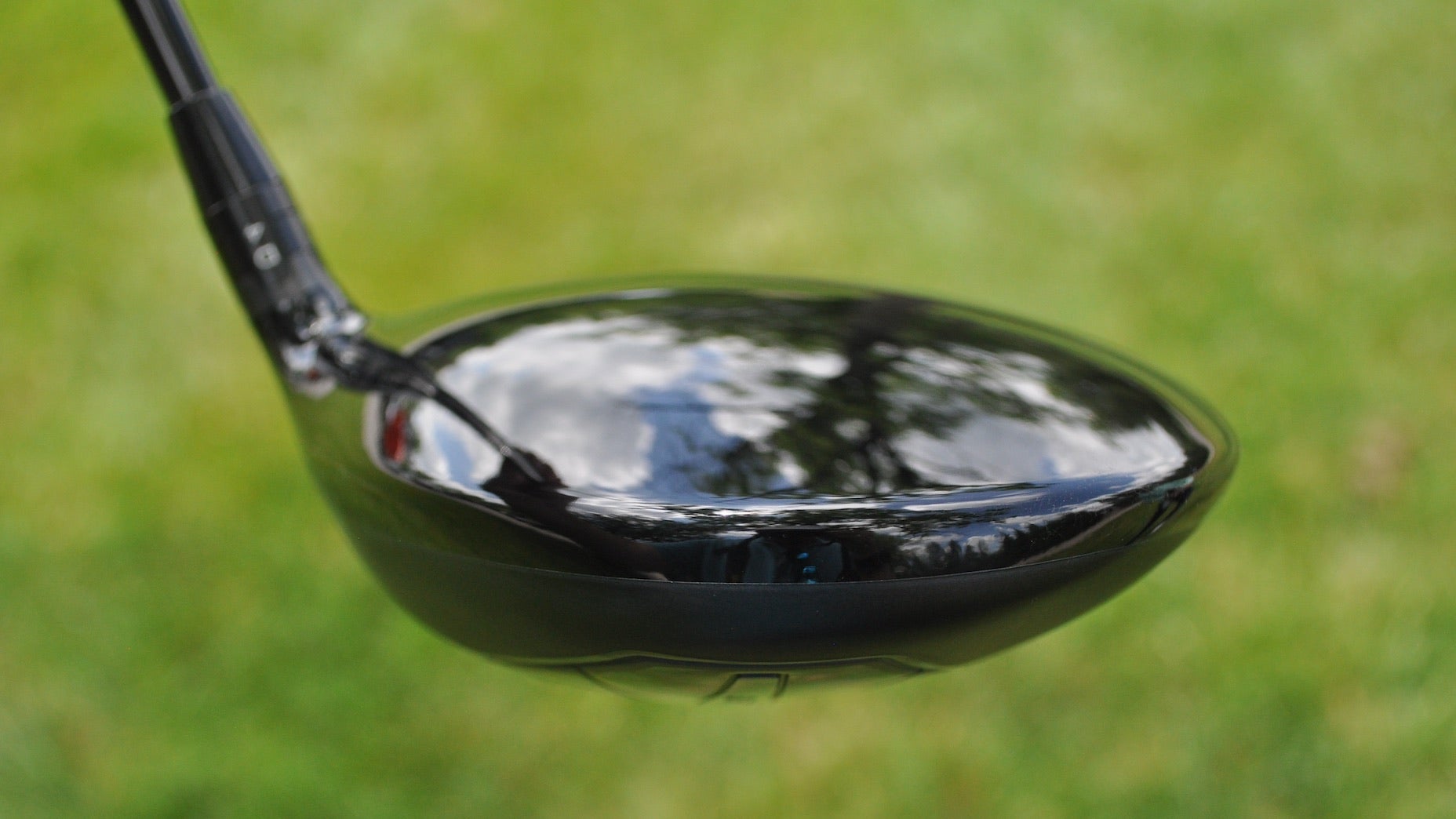
“Aerodynamics remains the final frontier for unlocking more speed,” Stephanie Luttrell, Titleist’s director of metalwood development, told GOLF.com. “The USGA isn’t regulating the athlete, so anything we can do to move the head through the air faster allows us to impart more speed to all players, not just the fastest out there.”
A few years ago, Titleist brought in lead aerodynamicist Steve Ogg to work on the golf ball side. Along the way, he started researching for the metalwoods division to see if aero gains could be achieved. What Ogg learned through research and rapid prototyping was how much the crown and sole aperture rate — where the two meet at the back of the head — controlled clubhead speed.
“The Foundation of GT started with clubhead shaping,” said Luttrell. “The more we can bring the closure rates together at uniform angles, the more you’re able to create better connectivity of that flow to the crown and sole. There’s less turbulence in terms of the separation of that flow. And reducing drag increases clubhead speed.”
Changes to the shaping of each head netted clubhead speed gains that otherwise would not have been possible had it not been for a shift to a multi-material construction (more on that in a moment).
“The center of gravity (CG) in an all-titanium construction with the current GT aerodynamics naturally wants to go up,” Luttrell said. “We couldn’t move forward with a club that moves 1.5 mph faster through the air but generates 300 RPMs more spin. That led us to find a way to keep the refined shaping and pair it with new construction. It ended up being the best of all worlds for us.”

Titleist GT2 Custom Driver
View Product
New path forward
Titleist has studied multi-material constructions for years, according to Luttrell, but they always found the overlap joints — where two material components were fastened together — came with significant penalties. Creating a seamless design that removed many of the most common joint locations higher in the head turned into a search for a crown construction that rivaled ATI 425. If you’re going to call a driver “Generational Technology,” the materials need to live up to the hype.
With a big assist from Dan Stone, Titleist’s former VP of R&D, a Proprietary Matrix Polymer (PMP) — initially used in the aerospace and automotive industries for its ability to be reformed if a defect was detected — was targeted as a viable option to bring the crown design to life. What made PMP noticeably different than other polymers was its weight and sound properties. It’s one-third the mass of titanium and elicited a metallic sound eerily similar to an all-titanium construction at impact.
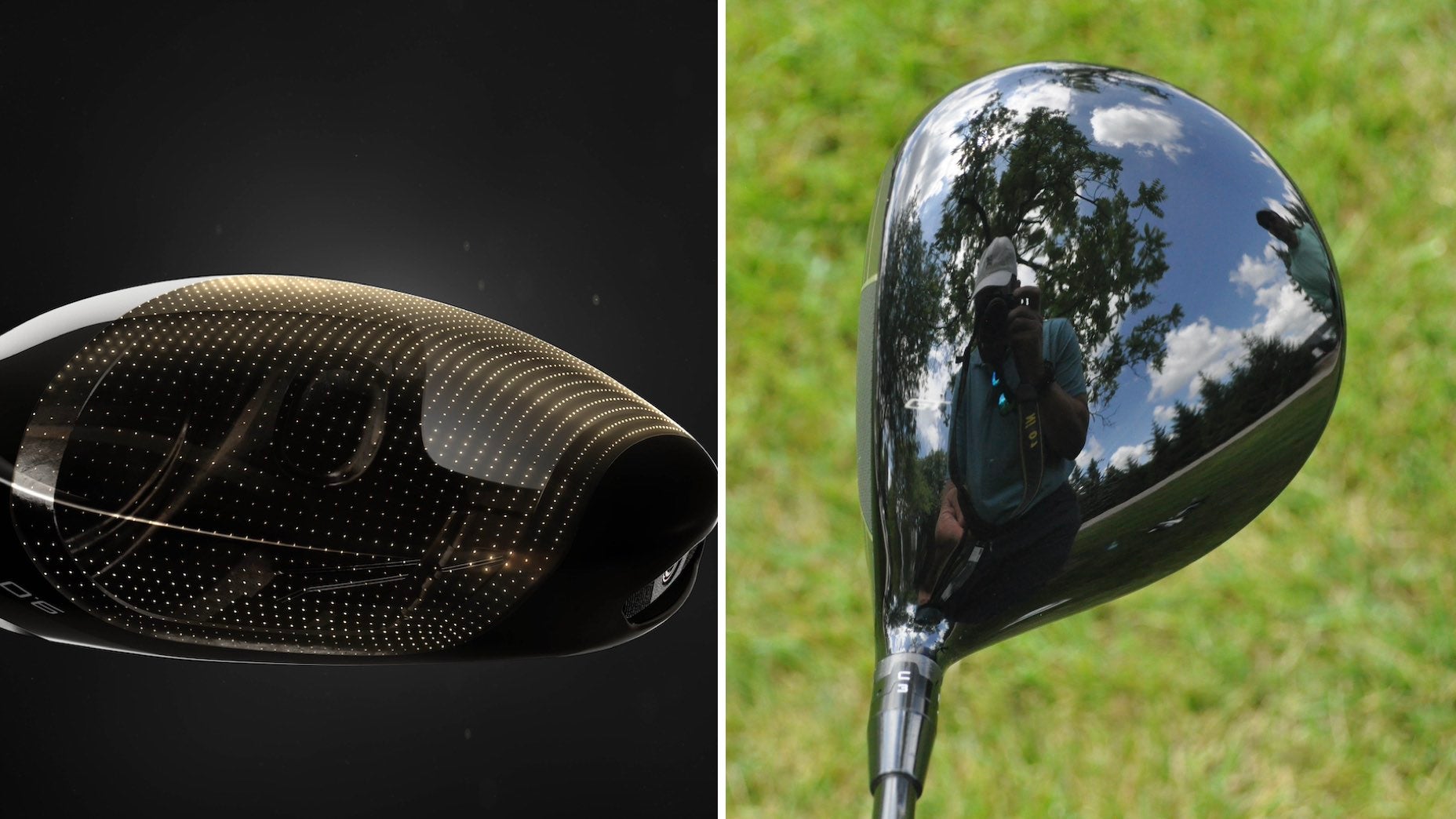
“Competitive composites that have been done in the past were, for the most part, thermoset composites used in the heads,” Luttrell said. “It’s unidirectional carbon fibers that are laid up and impregnated with epoxy. When you heat and cure them, the epoxy is the glue that holds that carbon fiber together. What makes PMP unique is it’s an engineering polymer — a resin that holds the carbon fiber together. You can pick and choose different engineering polymers and they can conduct sound frequency, whereas epoxy just dampens out all sound frequency.”
With PMP in the fold, Titleist created a sizable Seamless Thermoform Crown that wraps into the sole, netting an abundance of discretionary weight without having to make sacrifices to the crown construction and key performance attributes.
“Dan always said, ‘If we’re going to do multi-material, we have to do it in a very Titleist-specific way,'” Luttrell said. “This new crown construction made it possible to keep the overlap joints down low and hit our mass property goals. When our engineering group came to us, they said it could unlock things for us. Mass and density have been done in the past, but these materials allowed us to deliver multi-material in a very unique way. [The PMP] really hasn’t been used in clubhead design before.”
Titleist shocked its tour pros with this outrageous GT designBy: Jonathan Wall
Take a look at other multi-material crowns in the industry and you’ll notice the tech is visible. Now take a look GT. Indeed, while the driver crown and sole sections are PMP, it’s all concealed from view.
“The last thing we want is for a player to set this club down behind the ball and say they can’t play it because of the way it looks,” said Josh Talge, Titleist’s VP of marketing. “For us, we knew the crown needed to be clean to remain authentic to Titleist.”
Once the crown is added to the body, a group of specific operators dedicated to the crown process fill in the seams with a small amount of glue and hand buff it down to create a clean, smooth finish. From there, Titleist’s “piano black” finish is added to complete the process and achieve a seamless look.

Titleist GT3 Custom Driver
View Product
Split it up
Inside the bottom of each head is a bar that acts as a demarcation between the front and back of the sole — better known as Split Mass Construction. While the CG was moved slightly forward in all three models (GT2, GT3 and GT4) the placement varies, giving golfers the ability to target the best combination of speed, launch and spin for their game.
Center of gravity changes also unlocked the ability to reposition the Adjustable CG Track closer to the face of GT3 for improved performance characteristics.
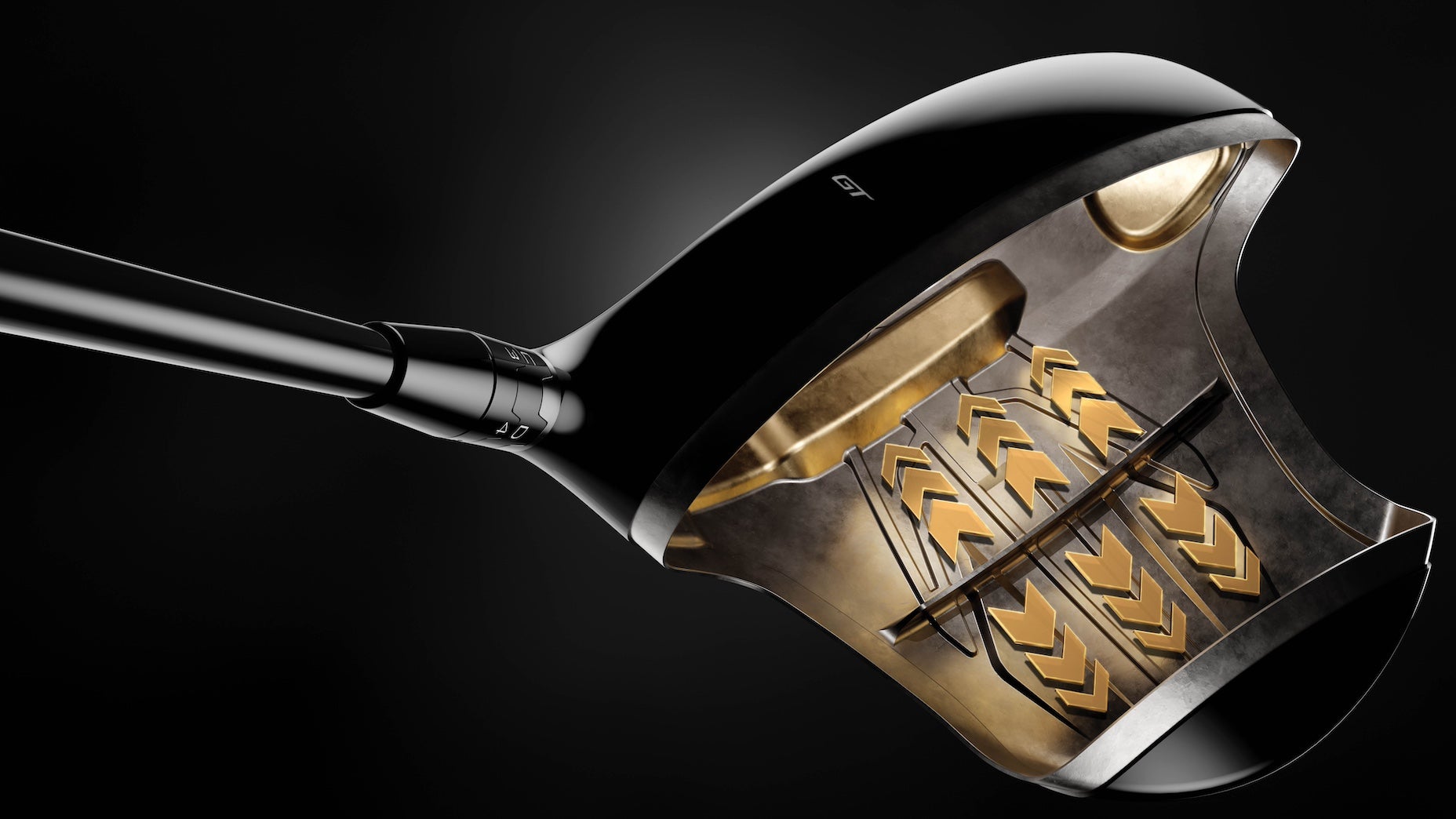
“There’s a large concentration of mass low and forward in the sole,” Luttrell said. “That remaining discretionary mass is then used in the form of adjustability or weight pads in the aft. It’s this teeter totter or balancing effect that allows us to get such great launch and spin stability.
“It has a forward CG, which gets us high launch and low spin out of all of the models — even though you will see a separation between each. That alignment of the CG closer to the neutral axis unlocks more clubhead speed and ball speed as well. Loading the rest of the mass in the back gives us this push and pull for exceptional stability with a CG location that delivers speed, launch and spin.”
It’s a small improvement to the overall design that nets massive gains across the board, regardless of your handicap.
Speed where it’s needed
Golfers may have noticed Speed Ring was only added to the ATI 425 face of TSR3 last time around. The goal was to make the design ubiquitous across all models, but timing kept it from becoming a reality.
“We really didn’t have a lot of time to explore it to the extent we wanted as engineers,” Luttrell said. “That changed with GT.”
The upgraded titanium Speed Ring is made to reinforce and stabilize the perimeter of the face and works in concert with a Variable Face Thickness (VFT) to maintain a specific thickness that’s built up layer by layer as it approaches the center. The result is a face construction that retains speed and spin at impressive levels.
“A lot of our players on tour like to hit a heel cut as their control shot,” Luttrell said. “We’ve seen ball speed exceptionally consistent on those heel shots with spin stability due to the inertial stability of the heads. Guys like Cam Young were spinning it at 3,000-3,200 RPMs on the heel cut with a 2 mph decrease in ball speed. Now he’s seeing almost equivalent ball speed with face center with spins in the 2,400-2,600 RPM range. All that does is bring that control shot closer to your longest shot and tightens up dispersion.”
Little details

The high-contrast face has been part of the design plan for a few generations. The lighter heel and toe and darker midsection frame the ball at impact and reveal more loft and bulge and roll at address. According to Luttrell, it also helps golfers find face center more often.
Why change something that works? Through feedback from the PGA Tour and Korn Ferry Tour, Titleist learned pros were starting to frame the middle section even more with silver Sharpie lines.
“Once we saw what was going on, we just adapted the face contrast to fit their needs,” Luttrell said. “Those lines have been integrated into the face and laser engraving pattern. It’s one of those immeasurable that when you set a driver down behind the ball helps improve your ability to frame and find center face. Now golfers can see center even better.”
Models
The GT2 (8, 9, 10, 11 degrees) is still considered the high-launch, low-spin bomber in the group. Boasting the deepest CG in the line, it’s designed for golfers who need extra stability on off-center misses. The head profile is longer front-to-back and its face is marginally shallower. The traditional pear shape more closely resembles that of GT3, which should come as welcome news for those who’ve waffled between GT2 and GT3 in the past. An interchangeable weight in the rear dials in headweight and swingweight for a custom feel.
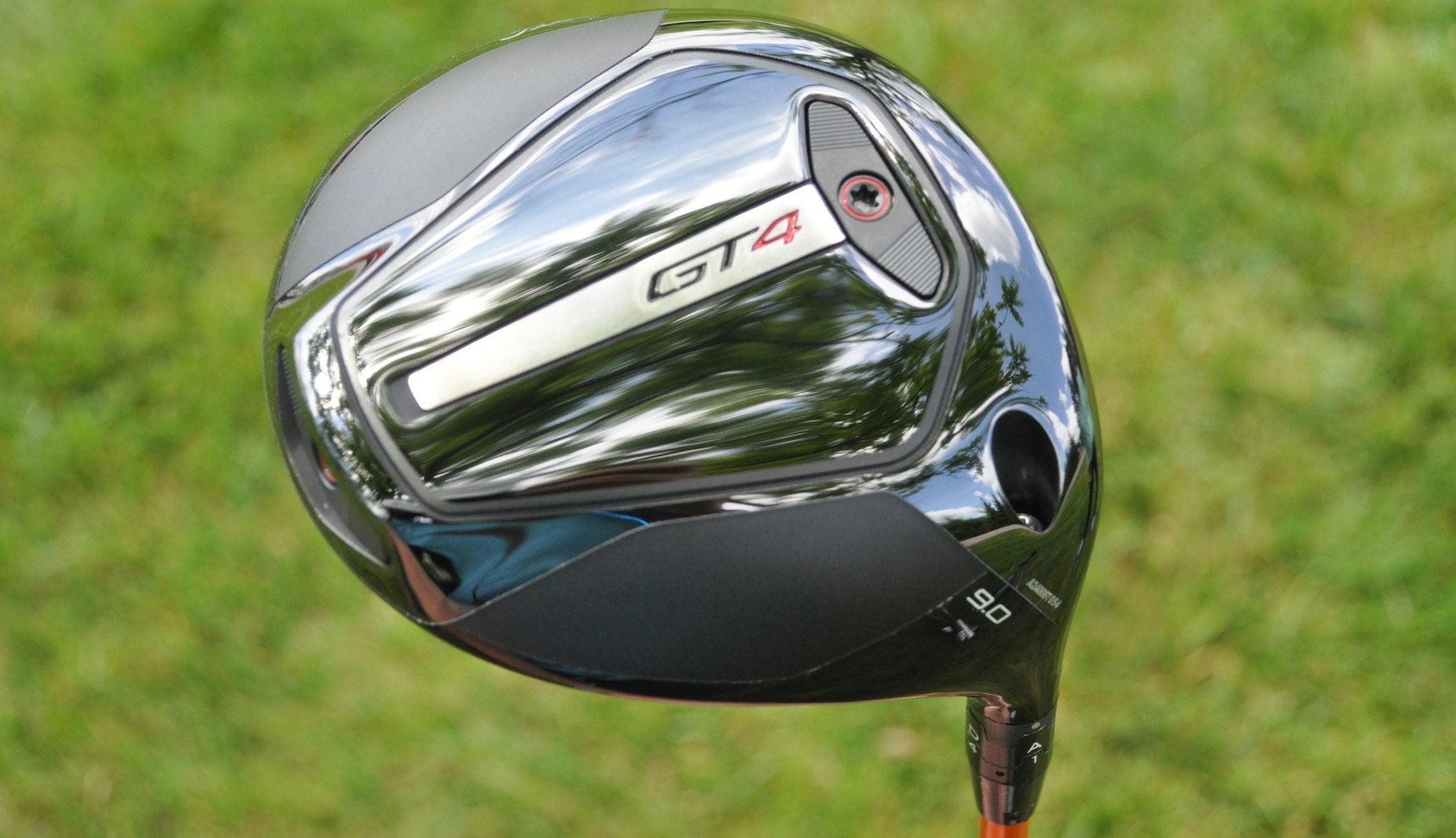
The repositioned Adjustable CG Track in GT3 (8, 9, 10, 11 degrees) features five possible weight locations (H2, H1, N, T1, T2) that get the CG closer in line to the golfer’s strike location tendencies. The profile appears more compact and pear-shaped with a face that sits taller than its predecessor.
Rounding out the lineup is GT4 (8, 9, 10 degrees) for golfers seeking to shed spin. When the heavier 11-gram weight is situated in the front, launch and spin are reduced. If the numbers dip to uncomfortable levels, simply place the 3-gram weight in the same location and place the heavier weight in the rear to increase launch and spin. Similar to previous 4 models, the head is slightly smaller at 430cc.
Shafts
Titleist is once again giving golfers the chance to pick from an extensive selection of shafts. Project X Denali Red (mid/high), Mitsubishi Tensei 1K Blue (mid), Project X HZRDUS Black 5th Gen (low/mid) and Mitsubishi Tensei 1K Black (low) are offered at the $649 price point. Premium offerings at the $849 price point include Graphite Design Tour AD-VF, Graphite Design Tour AD-DI and Graphite Design Tour AD-UB.
Want to overhaul your bag for 2024? Find a fitting location near you at True Spec Golf.


